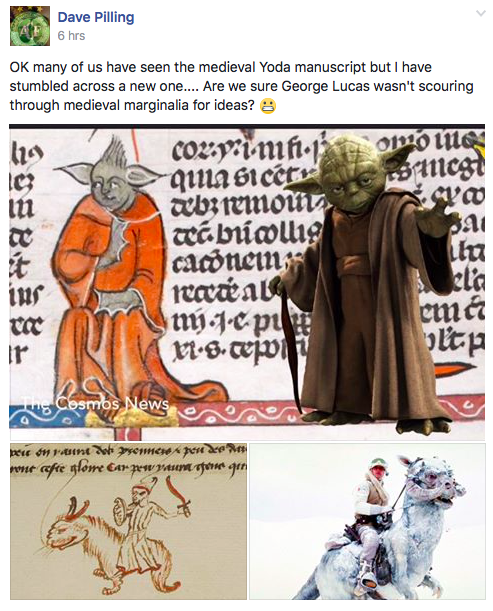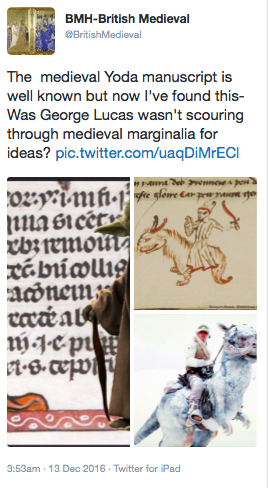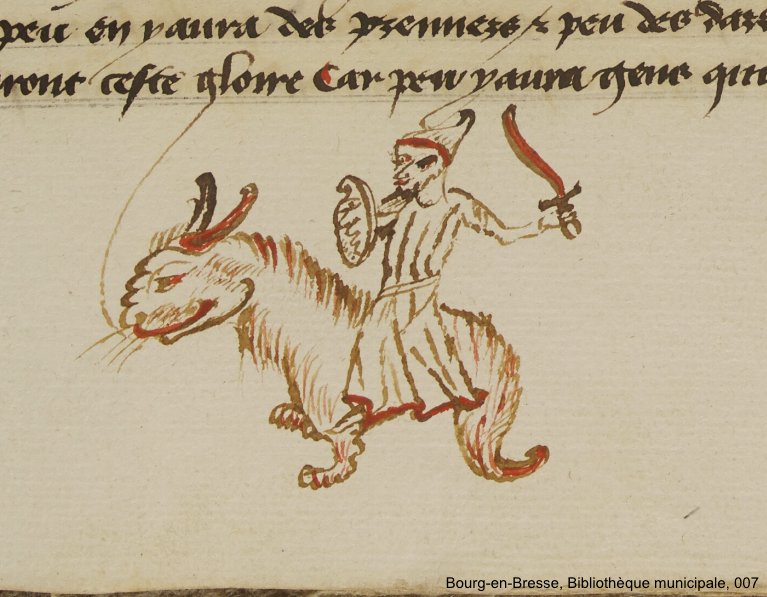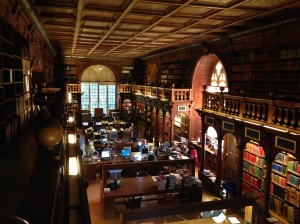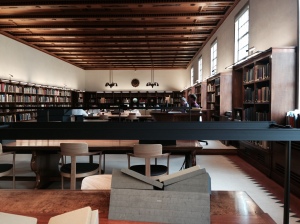presented at the launch of Esther van Raamsdonk’s Milton, Marvell, and the Dutch Republic (available at https://www.routledge.com/Milton-Marvell-and-the-Dutch-Republic/Raamsdonk/p/book/9780367520571)
At any other time, I am certain many of us would have met in person to celebrate the publication of Esther’s fantastic book on Anglo-Dutch relations and their impact on literature in Dutch and English in the seventeenth century. Perhaps in the context of an international conference, many of us here would have braved the North Sea crossing to be able to meet and toast Esther’s achievement. With that in mind, I want to start by reading you a brief account of one such North Sea crossing, from Jan van Boendale’s Boec vander wraken (Book of Vengeance), written in the late 1340s. Boendale, himself writing in a time of pandemic, tells us of an encounter with the Black Death:
I have been told by a virtuous, reliable and honourable man about a ship coming from England, crossing over to Zeeland, for it was originally from Brill. He swore on his soul that what I will tell you here is all true. There were more than twenty brave men on that ship. When they were at sea, they saw a large horse advancing towards them over the water, ridden by an apparently irate man. They were all astonished because the horse trod over the water, which was so vast and so deep. When the man approached them, he said: ‘Don’t be afraid of me, you won’t be harmed.’ One of the people on the ship said: ‘We see you riding across the water, which is a marvel to us.’ The rider said: ‘I am Death, who cannot be avoided by anyone whom God desires to be killed. I come from France and from other countries, where I have carried out that which God, Our Lord, ordered me to do. … now I travel to England to carry out that which God desires.’ At that very moment they lost sight of him and the vision ended; they did not know how.
The anecdote serves as a reminder that the North Sea was always already a connection, not a barrier, between England and the Dutch Low Countries, and that its currents were continually being crossed by people, goods, and, yes, also diseases. And in her book, Esther reminds us that people on both sides of the North Sea experienced the impact of that connection, even when not traversing it themselves, and even in the absence of meetings with people who had made the crossing. In my brief remarks today I will touch on some of the ways in which the dynamics of Anglo-Dutch interaction described by Esther can be seen to occur in Dutch and English literature throughout the centuries preceding Milton and Marvell.
In Chapter 1, where Esther surveys how Milton and Marvell viewed the Low Countries and their own relations to them, she also shows how Dutch–English macaronic punning was used in poetry impacted by Anglo-Dutch relations. Such macaronic poems raises the question of the linguistic competency –or at least tolerance of linguistic difference– among their audiences. Limited Anglo-Dutch multilingualism could be learned in many locations without crossing the North Sea. Chaucer’s Cook of the Canterbury Tales, whose world does not extend much beyond London, nevertheless managed to pick up some Dutch himself, as shown when he cites a Flemish proverb: ‘“sooth pley, quaad pley,” as the Flemyng seith’. Chaucer seems to have expected his –London, urban– audience to have had enough exposure to Dutch to understand the Dutch word ‘kwaad’. The anonymous fifteenth-century author of the London Lickpenny was less certain of this, when giving a description of a scene outside Westminster Hall:
Without the dores were Flemings grete woon;
Upon me fast they gan to cry
And sayd, ‘Mastar, what will ye copen or by –
Fine felt hatts, spectacles for to rede?’
The author’s –or perhaps the Flemish merchants’– glossing of the Dutch word ‘copen’ with the English ‘buy’ suggests an expectation of an audience that might need some hand-holding to be guided safely through London’s multilingual streets.
The principal example of English–Dutch macaronic punning Esther focuses on is the phrase ‘half-anders’ –half different, and, by implication, half the same–, used by Marvell. ‘Half-anders’ encapsulates the productive yet troubled relation between the English and the Dutch; the view, as Esther puts it, of ‘an Other who was at times dangerously different, at time, troublingly close.’ This characterization as the English and the Dutch as half familiar yet half different, too, can be traced back to Chaucer, who for comic effect has his Tale of Sir Thopas located ‘in fer contree, / In Flaundres, al biyonde the see / At Poperyng’: the productive clash between ‘a far country’ and Flanders, between ‘all beyond the sea’ and the foreign yet certainly familiar –and possibly funny-sounding– Flemish topographical name, it all effectively sets the scene for the chivalric slapstick of Sir Thopas.
The production of such Anglo-Dutch literature was contingent on proximity and constant interactions; in Chapter 2, Esther focuses on how intellectual networks and lines of book production, distribution and circulation created a ‘fully operational Anglo-Dutch community’. It is not always recognized how deep the roots of those networks of intellectual exchange and production run. The first recorded foreign student in Oxford, around 1195, however, came from the Low Countries: at the age of about 20, the Groninger Emo went to England, as he tells us in the chronicle he later wrote of his monastery in Groningen, ‘for study of the liberal arts then available at Oxford’; at the other end of the period, English students were prominent among the early contingents at the newly founded University of Leiden in the late sixteenth century. Likewise, providing the basis for the Anglo-Dutch religious discourses Esther describes in Chapters 4 and 5, a steady succession of generations links the Christianization of the Low Countries by early English missionaries in the eighth century, to the supply of the English market for religious literature by Dutch printers in the sixteenth and seventeenth.
Throughout this long period, book production had a central role in these contacts: the book believed to have been used by the early English missionary Boniface to fend of Frisian assailants at Dokkum near Groningen was possibly made at the Abbey of Saint Bertin in Flanders; in the high Middle Ages, an industry of production of Books of Hours for the English market sprouted in Flanders; and in the 1470s, the first book printed in English was produced in Flanders, published by the expat William Caxton, but printed by his Flemish collaborators, and set in type cast by his collaborator Johan Veldener, who would later himself go on to publish the Middle Dutch Brut, the only contribution outside French, English and Latin to the Brut chronicle tradition.
And with book production, as Esther continues to explore in Chapter 3, came reciprocal literary influence. The Low Countries don’t only have the highest concentration of surviving copies of Geoffrey of Monmouth’s History of the Kings of Britain outside Britain, but the thirteenth-century author Jacob van Maerlant translated substantial parts of it into Dutch verse, under patronage of Count Florence V of Holland, whose children were betrothed to children of King Edward I of England. Around the same time, the later Duke John II of Brabant married Margaret of England, another daughter of Edward I. To celebrate the bond, the Middle Dutch poet Jan van Heelu dedicated a verse chronicle about the history of Brabant to Margaret. He wrote: ‘Lady Margaret of England, who is engaged to John, son of Duke John of Brabant, because she does not know Dutch, I am sending her a gift of Dutch poetry, through which she can learn Dutch.’ It is not known whether the chronicle indeed helped Margaret to learn Dutch, but the language did play an important role at the duke’s court at this time: Margaret’s father-in-law, Duke John I, had himself written courtly love poetry in Dutch. Margaret continued to live in Brabant even following her husband’s death, and eventually died in Brussels in 1333.
When talking about Dutch literary images of the English, Esther mentions the figure of the ‘staert-man’, the ‘tail man’, a stereotype with a rich pallet of possible meanings, including animalistic, unrestrained ambition that required pruning; or cowardice –as in ‘turning tail’–, but alternatively also malice, as in the devil’s tail, turning the Gregorian Angles/Angels pun on its head. The stereotype is first found in a Flemish work, the Latin Ysengrimus, of the mid-twelfth century – the first written version of the Reynard the Fox saga, which not only includes a character described as ‘more vicious than a tail-bearing Englishman’, but which besides the eponymous protagonist Ysengrim, who lost his tail in an unfortunate encounter with Reynard, also mentions a second Ysengrim, an Englishman, who by contrast is explicitly mentioned as caudatus – in context it is unclear whether the word means ‘cowardly’, or ‘tailed’, or quite possibly both. An early example of Anglo-Dutch literary influence –if playing out in Latin texts– is found in the Speculum stultorum of Nigel de Longchamps, a late-twelfth century Canterbury monk. In it, the donkey Burnellus, who –like a medieval ancestor of Winnie-the-Pooh’s Eeyore– desires a larger tail. To achieve tail growth, Burnellus decides to stay with the English students at the university of Paris, hoping to get a bigger tail via this exposure to the English.
Where the tail was associated with the English in Dutch minds, the Fox was associated with Dutch speakers in English minds, thanks to that dastardly product of Flemish culture, Reynard the Fox. When Chaucer describes the ruckus of the chasing of the fox in his Reynard adaptation, The Nun’s Priest’s Tale, he identified the fox directly with Dutch speakers – namely the Flemish victims of lynching during the Peasants’ Revolt:
Certes, he Jakke Straw and his meynee
Ne made nevere shoutes half so shrille
Whan that they wolden any Flemyng kille,
As thilke day was maad upon the fox.
Finally, in 1481, Reynard the Fox itself was published in English, translated from Dutch by William Caxton, whose expat language was larded with Dutch words and idioms. Caxton’s Reynard sparked a lucrative strand in the English publishing industry, with over two dozen editions before 1700, receiving not only new woodcuts and moralizing annotation, but also two sequels unique to the English tradition. Thus, Reynard the Fox provides far from the only, but certainly the most prominent example of medieval literary translation from Dutch into English – and, in the light of the underlying literary and iconographic tradition that developed on both sides of the North Sea, an important illustration of the ‘shared literary air’ Esther identifies in her book – ‘a transnationalist dialogue, where the same questions and subjects are employed, but often answered differently’.

